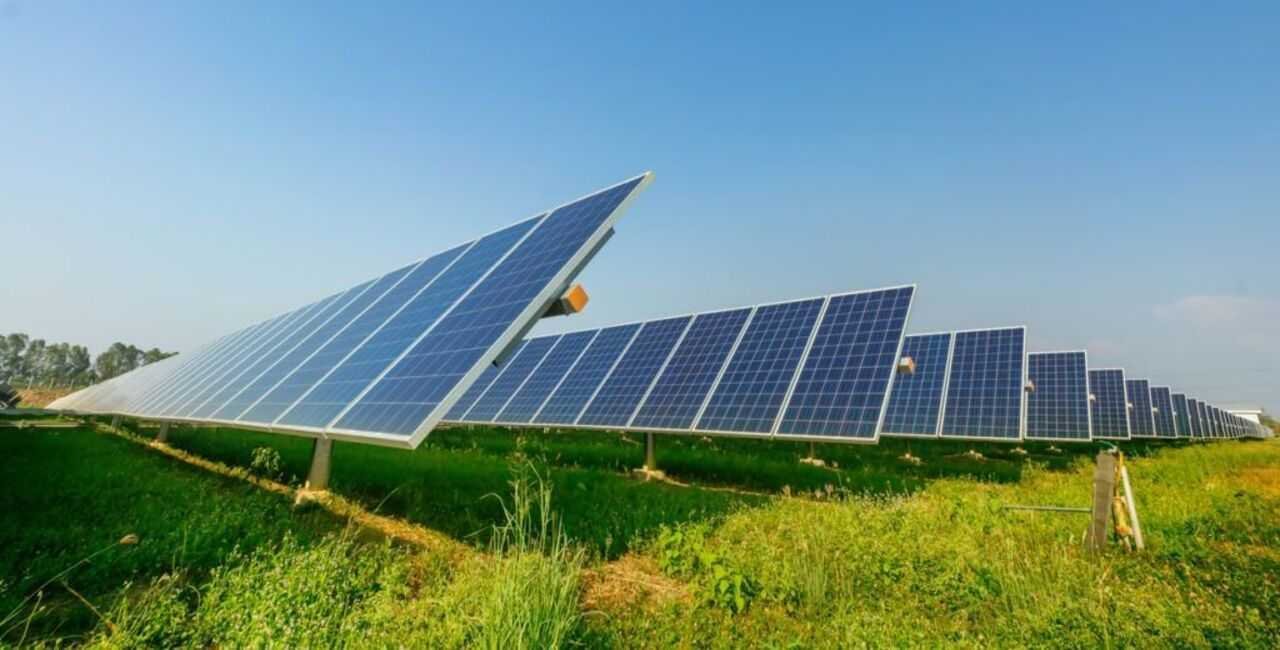A solar PV system typically includes the following components:
1. Solar panels: These are the main component of the system and are responsible for converting sunlight into electricity. Solar panels are made up of multiple solar cells that generate direct current (DC) electricity when exposed to sunlight.
2. Inverter: The DC electricity generated by the solar panels needs to be converted into alternating current (AC) electricity, which is used in most homes and businesses. The inverter is responsible for this conversion.
3. Mounting system: Solar panels need to be installed on a mounting system, which can be either roof-mounted or ground-mounted. The mounting system ensures that the panels are securely fixed and positioned at an optimal angle to maximize sunlight exposure..

A solar PV system typically includes the following components:
1. Solar panels: These are the main component of the system and are responsible for converting sunlight into electricity. Solar panels are made up of multiple solar cells that generate direct current (DC) electricity when exposed to sunlight..

2. Inverter: The DC electricity generated by the solar panels needs to be converted into alternating current (AC) electricity, which is used in most homes and businesses. The inverter is responsible for this conversion.
3. Mounting system: Solar panels need to be installed on a mounting system, which can be either roof-mounted or ground-mounted. The mounting system ensures that the panels are securely fixed and positioned at an optimal angle to maximize sunlight exposure.
4. Racking and wiring: Racking refers to the framework that supports the solar panels and holds them in place. Wiring connects the solar panels to the inverter and other components of the system, allowing for the flow of electricity.
5. Monitoring system: Some solar PV systems come with a monitoring system that allows
homeowners or system owners to track the performance and energy production of their system. This can be done through a mobile app or a web portal.
6. Electrical panel: The electricity generated by the solar PV system is fed into the electrical panel of the building, where it can be used to power appliances and other electrical devices. Any excess electricity can be fed back into the grid through a process called net metering.
7. Batteries (optional): In some cases, solar PV systems may include battery storage to store excess electricity generated during the day for use during the night or during periods of low sunlight. This allows for greater energy independence and the ability to use solar power even when the sun is not shining.It is important to note that the specific components and configuration of a solar PV system may vary depending on factors such as the size of the system, location, and individual preferences.

d wiring: Racking refers to the framework that supports the solar panels and holds them in place. Wiring connects the solar panels to the inverter and other components of the system, allowing for the flow of electricity.
5. Monitoring system: Some solar PV systems come with a monitoring system that allows
homeowners or system owners to track the performance and energy production of their system. This can be done through a mobile app or a web portal.
6. Electrical panel: The electricity generated by the solar PV system is fed into the electrical panel of the building, where it can be used to power appliances and other electrical devices. Any excess electricity can be fed back into the grid through a process called net metering.
7. Batteries (optional): In some cases, solar PV systems may include battery storage to store excess electricity generated during the day for use during the night or during periods of low sunlight. This allows for greater energy independence and the ability to use solar power even when the sun is not shining.It is important to note that the specific components and configuration of a solar PV system may vary depending on factors such as the size of the system, location, and individual preferences.

d wiring: Racking refers to the framework that supports the solar panels and holds them in place. Wiring connects the solar panels to the inverter and other components of the system, allowing for the flow of electricity.
5. Monitoring system: Some solar PV systems come with a monitoring system that allows
homeowners or system owners to track the performance and energy production of their system. This can be done through a mobile app or a web portal.
6. Electrical panel: The electricity generated by the solar PV system is fed into the electrical panel of the building, where it can be used to power appliances and other electrical devices. Any excess electricity can be fed back into the grid through a process called net metering.
7. Batteries (optional): In some cases, solar PV systems may include battery storage to store excess electricity generated during the day for use during the night or during periods of low sunlight. This allows for greater energy independence and the ability to use solar power even when the sun is not shining.It is important to note that the specific components and configuration of a solar PV system may vary depending on factors such as the size of the system, location, and individual preferences.

